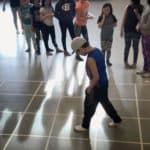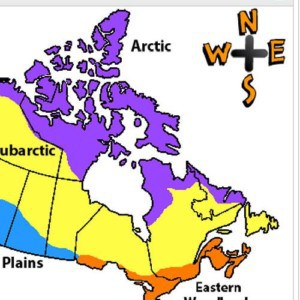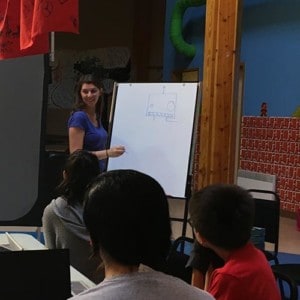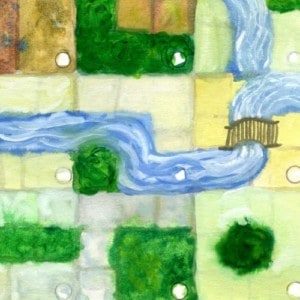Section Navigation
Introduction
The X and Y coordinates on a computer screen are used as reference points for objects and used frequently in the development of software and video games. It is how the placement of items on a screen are referenced so that the program knows where things are, and what is needed to manipulate the movement of items around a screen.
Vocabulary
X Coordinate - The horizontal value in a pair of coordinates, it references where something is along the ‘left-right’ axis
Y Coordinate - The vertical value in a pair of coordinates, it references where something is along the ‘up-down’ axis
Learning Goals
To provide students with a fun, hands-on way of understanding how X/Y coordinates work, and apply this understanding to their work in Scratch or other programming activities.
Guiding Questions
Start by asking the students who has worked with X and Y coordinates. Students may have used X/Y coordinates in graphing before. Encourage them to lead the discussion for the less experienced students on what X/Y is and how it is used.
Curriculum Links
This module provides an opportunity to address curriculum expectations in the Science, Computer Studies and Math in Grade 3 to 5 expectations. In particular, students will can apply this understanding to a Scratch lesson.
Materials
- Floor space
- Masking tape
- Pen and paper
Non-Computer Activity
Memory Grid
Using the masking tape, create a grid on the floor, five by six squares. Make each square large enough for a student to stand in. Indicate which direction is X, and which direction is Y. Depending upon the age of your group, it might be helpful to tape labels along the X and Y axis with the name of each column and row.
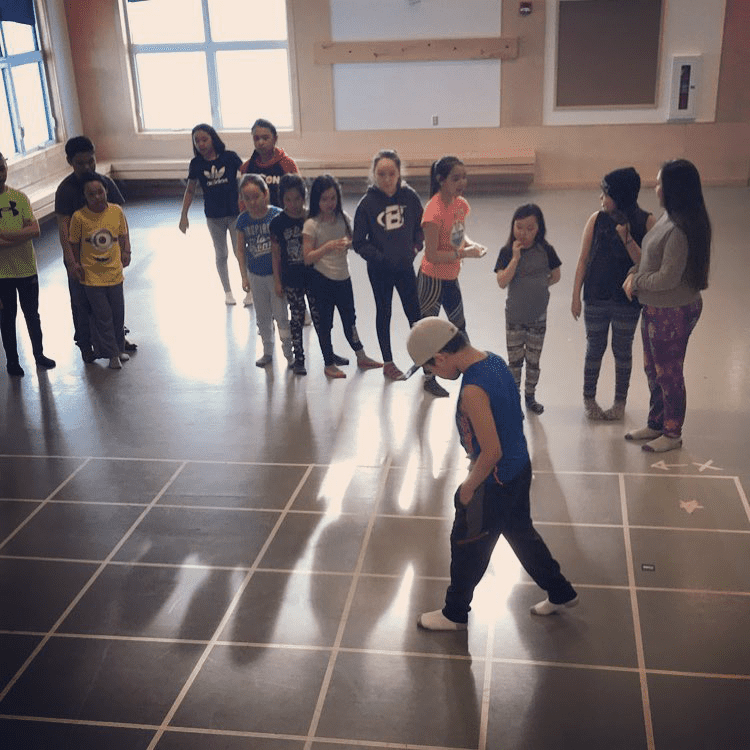
The teacher creates a paper copy of the grid with a path through the maze, but does not show this to the students. Only the teacher knows the successful path through the maze.
Select a spot as the start of the maze, and have the students line up this point. The first student takes a step, and announces their X/Y coordinate. They continue moving forward or sideways (not diagonally), trying to guess the correct path through the maze. They continue moving (stating their coordinate at each square), until they choose an incorrect square, at which point they move to the back of the line. The next student begins at the starting point and tries to follow the same path as the previous student. They will have to rely on their memory and try not to make any mistakes!
If you have more time, and want to make the game a bit more challenging, rather than announcing the starting point, and allow students to start anywhere along the outer edge of the grid, to try and find the correct starting point of the path through the maze.
Rules
- Steps can only be taken forward, backward, or sideways, one square at a time. Students cannot move diagonally, or skip any squares.
- Students must announce their X/Y coordinate as they move.
For example, a path through a 5×6 grid could look like this:
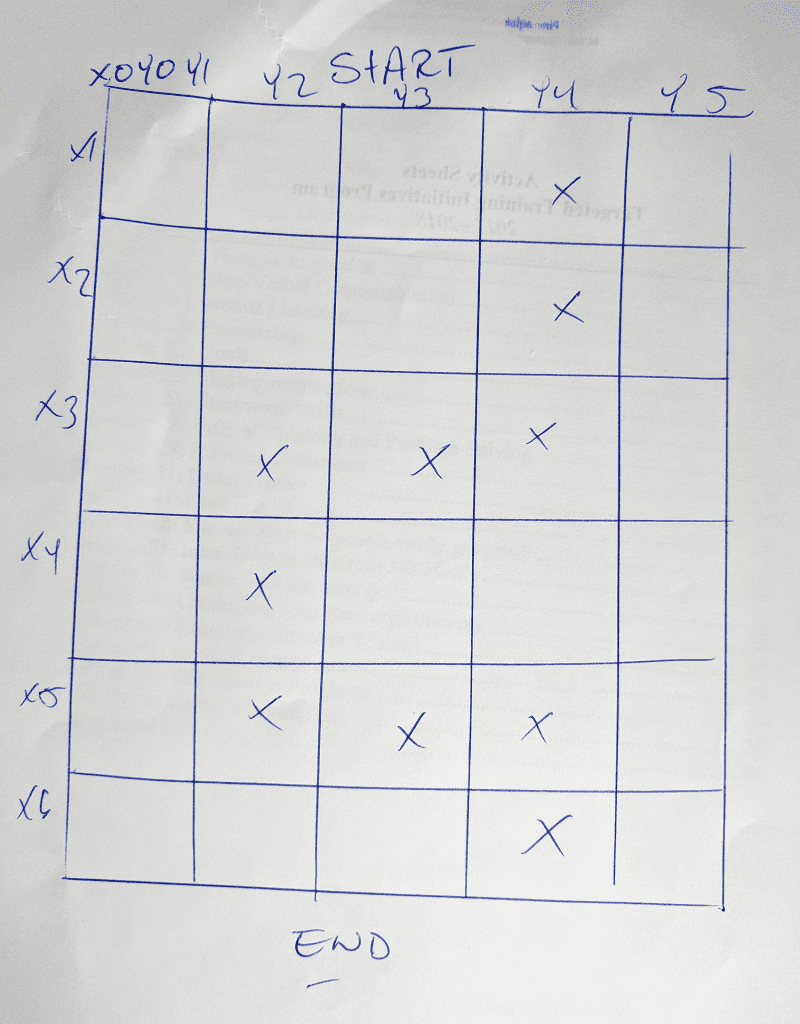
Computer Activity
There are some good turned-based games both on computer and off that lend themselves well to this exercise as a follow up, or to play in advance.
Battleship, both the original game and online offer students an opportunity to use coordinates to try and guess the location of their opponents ships.
Some other turn-based, grid games include “Clark“, X-Com, Battletech to name a few.
Conclusion
Once completed you can move on to Scratch to give the students an opportunity to immediately reinforce this new knowledge.
In Scratch show how the X/Y coordinates move in the play area as the mouse moves. Up/Down moves the Y coordinate, Left/Right moves the X coordinate.
Resources
- A free online Battleship game
- A Treasure Map Graphing game
- A simple coordinates game where students have to input the correct coordinates of the house. It also has a “plot” mode where students can enter values to move the house.
- A simple and fun game where students have to click on the correct coordinate as accurately as they can. Different levels for different ages.
